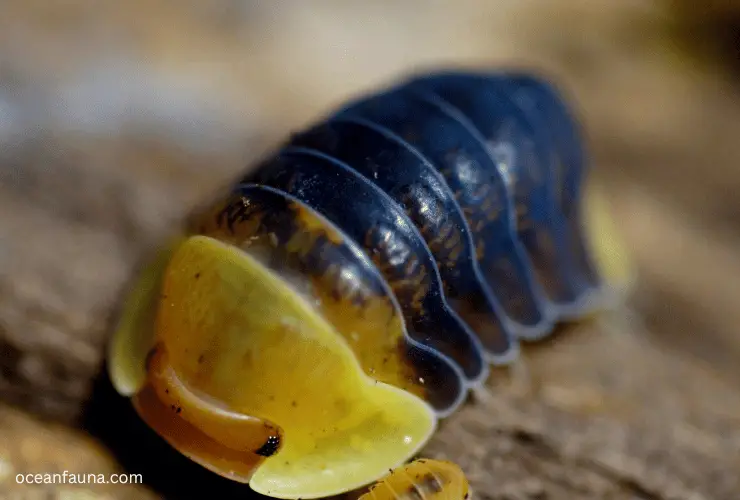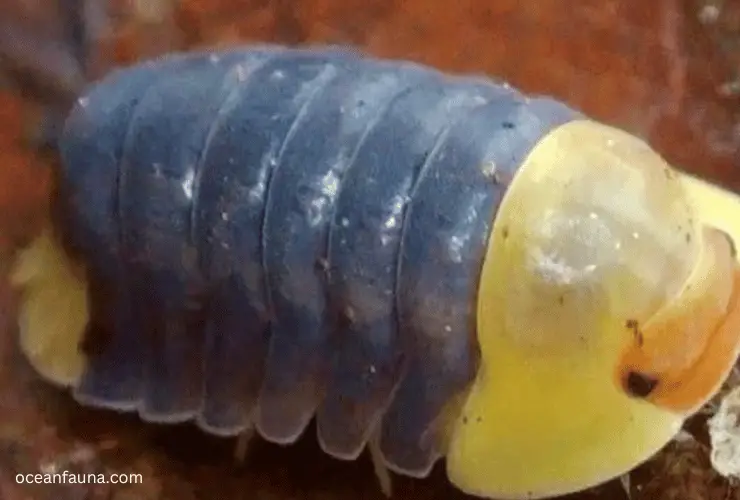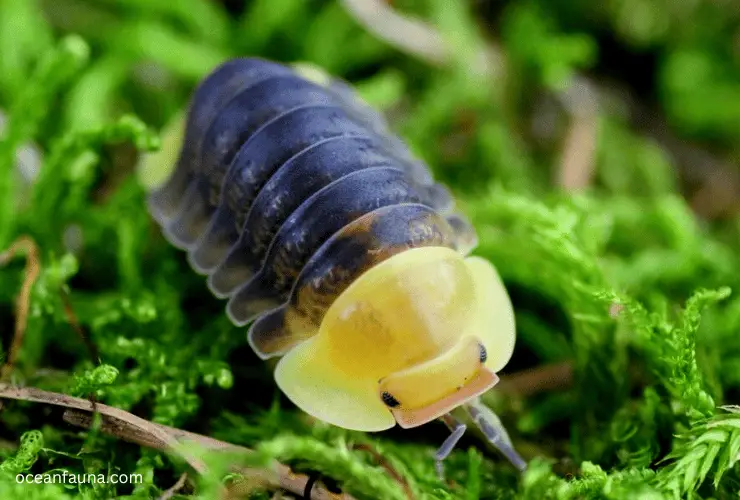You might have already known that there are more than 10,000 species of isopods. And among those vast numbers, rubber ducky isopods are one of the recent discoveries.
By the name itself, you can imagine one or two features of rubber ducky isopods. But is that all? Well, absolutely not!
Rubber ducky isopods have plenty of unique and interesting facts that are highly fascinating and tell a lot about the ecosystem. They are tiny creatures with unique shapes and sizes. Besides, they can roll themselves and convert them into a tight ball when they are threatened. That’s why they are also known as pill bugs or roly-poly bugs. Additionally, they’re found almost anywhere in the world and prefer to live in damp and wet areas.
If you’re one of those who’d love to know about these tiny creatures and discover some amazing facts about rubber ducky isopods, you’ve arrived at the right place.
This article will take a closer look at everything you need to know about rubber ducky isopods, including their size, habitat, interesting facts, etc. So without any further ado, let’s get started…
Rubber Ducky Isopod: Size, Habitat, and Facts
Among the varieties of isopods, rubber ducky isopods are certainly one of the cutest ones based on their size, shape, and appearance.
They’re a bit different looking compared to the rest of the species. Besides having an appealing and cute look, rubber ducky isopods have some unique characteristics that set them apart from the rest.

Another interesting thing about them is that they’re one of the newest discoveries. So due to this fact, they’re still mysterious, and people only know a little about them.
But don’t worry. We’ve got your back! This guide will explore the unexplorable and present you with some of the most amazing and unknown facts about these little pill bugs. So, keep reading to the end…
· Appearance
Let’s begin with the appearance and look of rubber ducky isopods!
Rubber ducky isopods are one of the most beautiful and unique looking among all the isopods. The main noticeable thing about them is the frontal part of the head.
Rubber ducky isopods have a pair of lips that look similar to a duck. And from that, the naming has been done. Other than having a “ducky” look, they have a round, segmented body, typically brown or grey. Their exoskeleton is hard, providing them with protection from predators and the elements.
Other than helping to provide protection, the exoskeleton also helps them in the breathing and respiration process of isopods.
· Size
If you’ve studied isopods, you already know that isopods are one of the tiniest creatures. Although rubber ducky isopods belong to this species, they’re relatively larger than the others.
On average, rubber ducky isopods can reach up to 2 cm or 0.8 inches in length. Even though rubber ducky isopods can survive up to a few years, as they’re slow growers, they become only a couple of centimetres in length.
Due to their low growth and tiny size, they are often considered a dwarf!
· Taxonomy
Like every other creature, rubber ducky isopods also have a unique and scientific name.
Rubber ducky isopods belong to the phylum Arthropoda, class Crustacea, order Isopoda, and family Armadillidiidae. They are also known as Cubaris sp, which is their scientific name.
To get a detailed idea about the taxonomy of rubber ducky isopods, a chart is presented below-
| Kingdom | Animalia (Animals) |
| Phylum | Arthropoda (Arthropods) |
| Subphylum | Crustacea (Crustaceans) |
| Class | Malacostraca (Malacostracans) |
| Superorder | Peracarida (Peracarida (Amphipods and Isopods)) |
| Order | Isopoda (Isopods) |
| Suborder | Oniscidea (Woodlice) |
| Infraorder | Holoverticata |
| Family | Armadillidae |
| Genus | Cubaris |
· Geographic Location
Rubber ducky isopods are found all over the world. But they are most commonly found in Europe, North America, and Asia.
In Asia, a majority portion of rubber ducky isopods are found to be living in Thailand in damp and moist places. They are mainly found in gardens, parks, and in greenhouses.
· Habitat
Rubber ducky isopods are found all over the world. However, they are most commonly found in damp, shady areas such as leaf litter, rocks and logs, and soil. They are also found in gardens, parks, and in greenhouses.
There’s an interesting reason behind isopods living around wet and moist places. In order to respire and survive, isopods need to keep their respiratory organs wet. That’s why you often see them living or roaming around damp places.
Besides, like other isopods, rubber ducky isopods are decomposers and are attracted to organic matter like leaves, wood, and soil.
· Food Habit
Rubber ducky isopods are decomposers, and their diet mainly consists of organic matter such as leaves, wood, and soil. They are also known to feed on dead insects, algae, and other plant material.
Alongside feeding on dead materials, rubber ducky isopods prefer protein, calcium, and leaf litter as food. They have additional nutritional requirements, so they prefer to have these types of nutrition-enriched food. It is also important to know and consider if you plan to keep them in the enclosure!
· Respiration and Breathing Mechanism
Rubber ducky isopods breathe through gills on their bodies’ sides. They extract oxygen from the water in their environment and release carbon dioxide.
· Lifespan
Rubber ducky isopods can survive up to several years, depending on the environment and the condition they are living in. But on average, the lifespan of rubber ducky isopods is around 2-3 years. They can even live up to 5 years if they’re properly cared for.
As you already know, the living area preference of these tiny little isopods. So if they get the preferred environment, their longevity increases. Longevity highly depends on the environment. If you plan to keep them as pets, you should consider this case properly.
· Reproduction Method
Rubber ducky isopods reproduce sexually. Instead of giving birth, female isopods lay eggs.

The females lay eggs in small clusters, which hatch into nauplii, a small, shrimp-like stage. These nauplii then moult several times before reaching maturity.
Rubber ducky isopods have a high reproductive rate and can produce several hundred offspring in a single year. And due to this fact they’re abundant in nature.
14 Unknown and Amazing Facts about Rubber Ducky Isopods
Here are top 14 unknown facts about rubber ducky isopods-
- The naming of rubber ducky isopods came due to having lips like ducks. Rubber ducky isopods have a pair of lips that are not found in other isopods. For this reason, they’ve “ducky” in their name.
- Rubber ducky isopods, also known as Cubaris sp are a type of crustacean that belongs to the family Armadillidiidae.
- Rubber ducky isopods have a unique defensive system when they are threatened. They roll up into a tight ball when they see any danger or predator. This is a defence mechanism that helps them protect themselves from predators.
- Rubber Ducky Isopods are also known to be great at adapting to different environments. They can survive in a variety of conditions, from dry to damp and from hot to cold. They have a high tolerance for environmental changes. That’s why they can survive in a wide range of temperatures and humidity levels.
- These isopods are found all over the world, but they are most commonly found in damp, shady areas such as leaf litter, under rocks and logs, and in soil. They are also found in gardens, parks and in greenhouses.
- They are also known to be great at decomposing organic matter. They are an important part of the ecosystem and play an important role in breaking down dead plant material, thus enriching the soil.
- They are also considered a great alternative to the common pet feeder insects like crickets and mealworms. They are easy to culture, reproduce fast and are a great food source for a variety of pet reptiles, birds, and small mammals.
- They have a round, segmented body that is typically brown or grey in colour. Their exoskeleton is hard, providing them with protection from predators and the elements.
- Rubber ducky isopods are hermaphrodites, meaning that each individual has both male and female reproductive organs.
- They have a great sense of smell and can locate food by sensing chemicals in the environment.
- They are sensitive to light and will avoid bright areas. They tend to live in dark and damp places.
- They have a great ability to regenerate lost appendages, such as legs, antennae, and other body parts.
- They are known to play an important role in the biogeochemical cycle. They are important decomposers that help to break down organic matter and recycle nutrients in the soil.
- They have a great ability to survive in adverse conditions. They can survive for long periods of time without food or water.
FAQ
· Are rubber ducky isopods rare?
Ans: Yes, rubber ducky isopods are rare. In fact, they’re one of the newly discovered and most exotic species. They’re not commonly found in our surroundings like other isopods. There are still a lot of unknown facts about their ducky isopods.
· Can you Keep Rubber Ducky Isopods as Pets?
Ans: Yes, you can keep them as pets. However, they’re sensitive, and their longevity depends on their surrounding environment. In aquariums or enclosures, they need around 70-80 degrees Fahrenheit (21-27 degrees Celsius) for proper growth and survival. They prefer an environment with higher humidity when kept in an enclosure.
Conclusion
In conclusion, rubber ducky isopods are fascinating creatures known for their unique shape, size, and ability to roll up into a tight ball when threatened. They’re the newest addition to the isopod family.
So that’s it on knowing everything about rubber ducky isopods. Although all the characteristics and facts about these ducky isopods are still unknown, we tried to enlighten you as far as we could.
Understanding the taxonomy, geographic location, food habit, respiration and breathing mechanism, lifespan, and reproduction method of rubber ducky isopods can help us appreciate the complexity and diversity of the natural world.
In case we missed anything, feel free to let us know by commenting below. Thank you!


3 thoughts on “Rubber Ducky Isopod: Size, Habitat, and Facts”